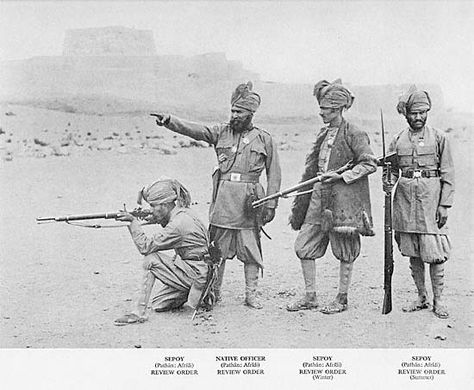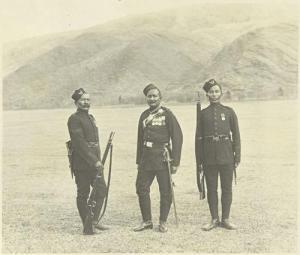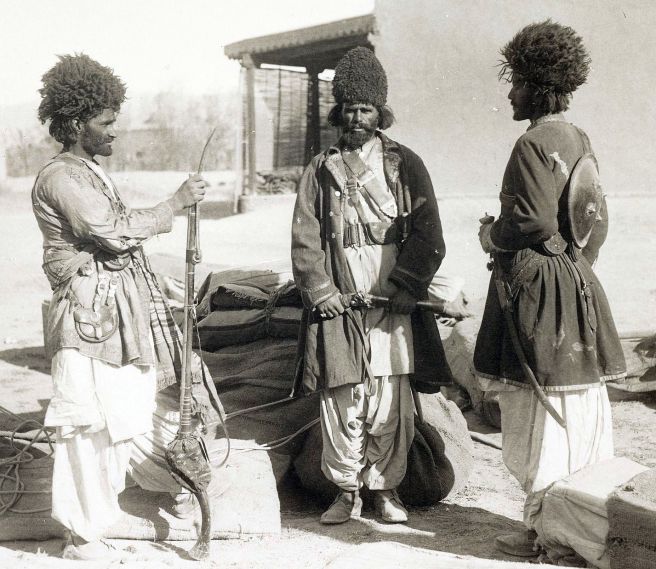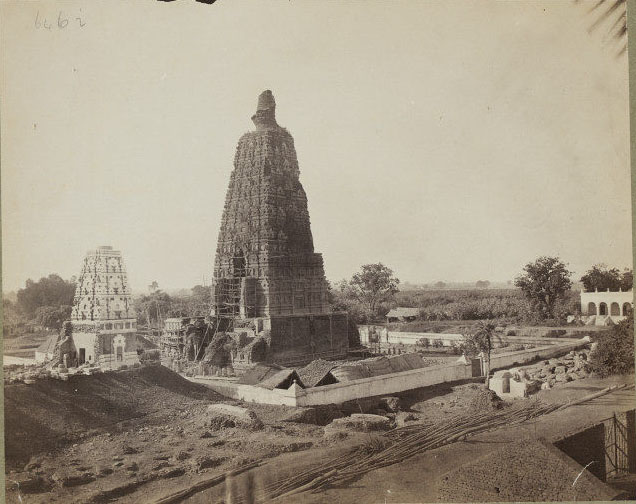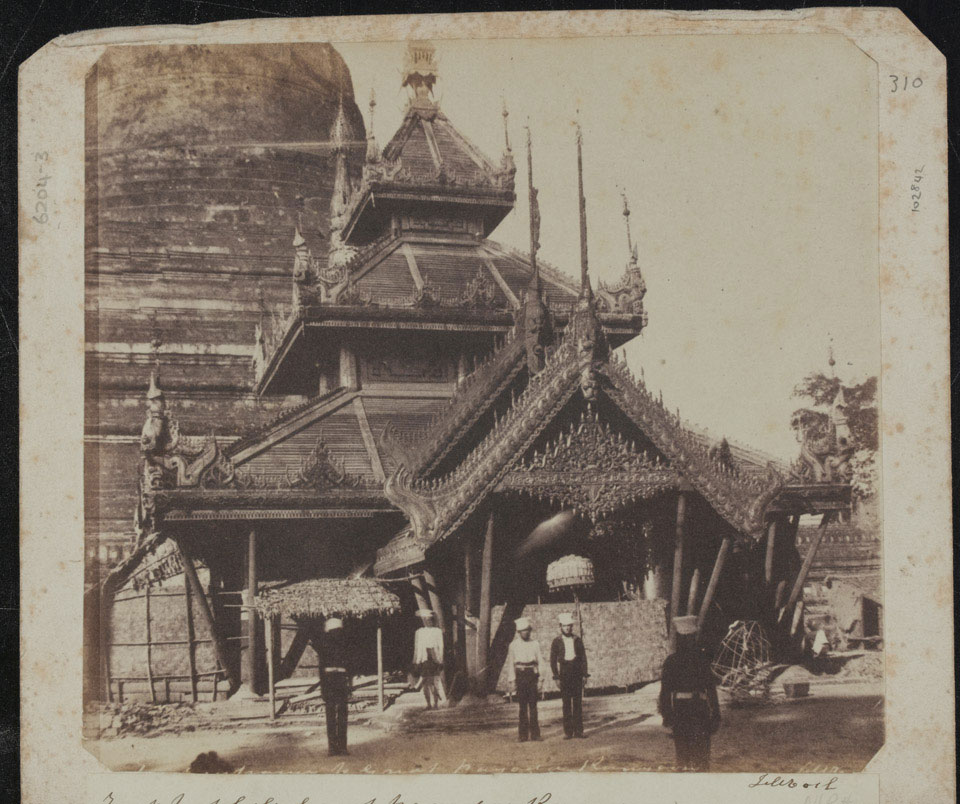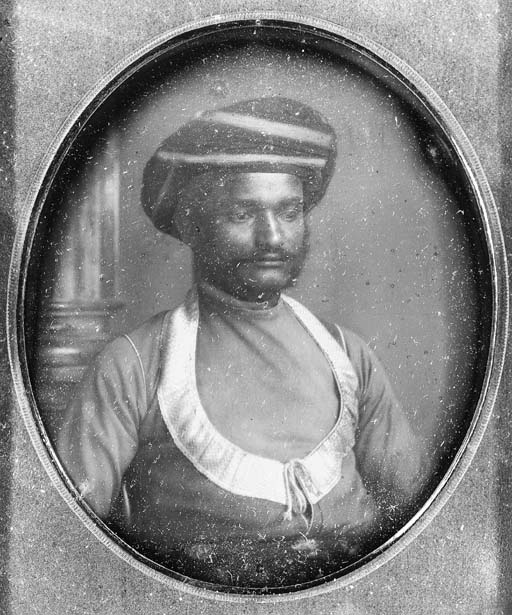Fred Bremner / Frederick Bremner (1863–1941) was a Scottish photographer, born in Aberchirder, Scotland. He left school at the age of thirteen to join his father’s studio and worked there for six years. In 1882, Bremner travelled to India to join the photographic business of his brother-in-law G.W. Lawrie in Lucknow. He opened and established his own studios at Rawalpindi and Quetta by 1895, later with a Lahore branch.
He travelled throughout northern India (modern India and Pakistan) to photograph, and capture rural life, landscapes and people in late 19th and early 20th century.
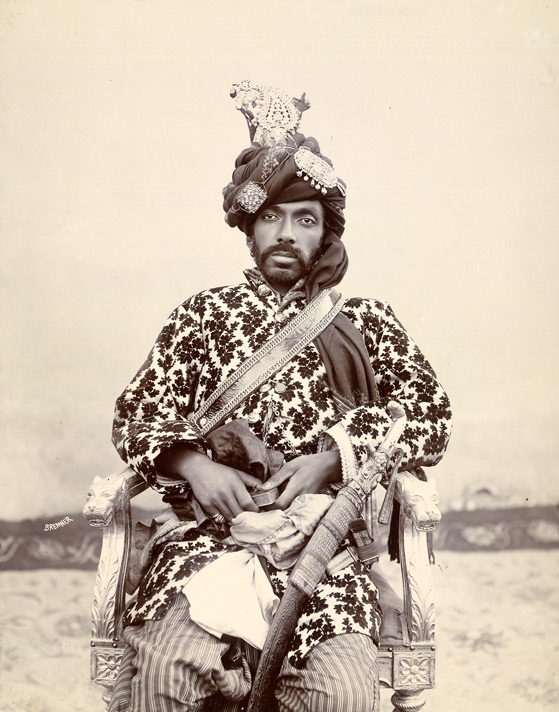
Sir Mir Mohammad Khan, Khan of Kalat c.1894Fred Bremner closed Quetta branch and moved to Simla and opened a studio in Bourne and Shepherd’s old premises Talbot House in 1910. Fred Bremner left India in 1923, although business continued until about 1932. He photographed British and Indian Army units on station in the North-West Frontier region of India (now Pakistan) during the late 1800s and documented in details army personalities, soldiers, war equipment, uniforms and living conditions of a battalion.
The fine Collotype Prints of his work of the 1st Battalion Wessex Regiment (Late 44th FOOT), Quetta Baluchistan, 1911 are exceptionally rare and important document with very few copies available.
While photographing army officials in Rawalpindi he observed the characteristic of different ranks and decided to conduct a three-month tour to prepare a photographic series. The album on the martial races in the Indian Army was intended to be used as a companion to military recruitment manual and contained 60 Collotype prints with the Sikhs well represented. The group photographs portrayed uniformed soldiers in front and side positions, standing and sitting on houses in museum-like poses that indicated their orders of dress in relations to each other.
Fred Bremner used collotype process which was popular in the early 1900s for his publications. He published numerous books namely, Types of the Indian Army (1900), with text by A.H. Bingley and 60 bromide prints by Bremner; The 1st Battalion Wiltshire Regiment ‘The Springers’ (1900), with 26 collotypes reproductions from Bremner’s photographs; The 2nd Battalion Suffolk Regiment (1900), with 38 collotypes; Baluchistan Illustrated, 1900 (1900), with 50 collotypes.
Collotype is a photomechanical screenless printing process used to produce high-quality prints from continuous-tone photographic negatives. The name collotype is derived from the Greek word kola (“glue”). The basic principle of the collotype process was invented by Alphonse-Louis Poitevin (French, 1819–1882) in 1855, with early application of the process demonstrated by F. Joubert in 1859. The most important improvements were introduced in 1868 by Joseph Albert and Jakub Husnik.
The collotype process is based on the properties of gelatin and potassium bichromate. A liquid solution of these materials is spread on a metal, glass, or acetate plate. This plate becomes light sensitive upon drying. When this gelatin plate is exposed to light through a negative, a chemical reaction is created between the gelatin and bichromate. The gelatin hardens in proportion to the amount of light that strikes the plate. The thin area of the negative allows more light to reach the plate thus hardening the shadow areas. In contrast, the dense highlight area allows little light to strike the plate and leaves a relatively soft gelatin.
Once properly exposed, dried and aged, the plate is ready for printing. Collotype is based on the principle that oil and water do not mix. The plate is printed in a manner similar to the lithograph. The plate is dampened with a solution of glycerine and water, then a greasy lithographic ink is rolled over the surface of the plate. The unexposed portions of the plate soak up water and then repel the greasy ink. In the exposed areas, the hard, dry surface of the gelatin repels moisture but accepts the ink.
The imaged collotype retains the characteristics of the negative, including a wide range of grays, rich blacks with fine definition, and open shadow detail. As an ink-to-paper process, the collotype has long-lasting archival properties.
Fred Bremner, wrote a memoir of his life, “My forty years in India” which offers a brief, tantalising glimpse of an otherwise almost undocumented aspect of British life in India.

Reference
http://www.artnet.com/artists/frederick-bremner/types-of-the-indian-army-album-w60-works-3dcuNUBrHlWMNxEz577UXw2
https://www.bonhams.com/auctions/23459/lot/247/
Religion and Technology in India: Spaces, Practices and Authorities, edited by Knut A. Jacobsen, Kristina Myrvold


